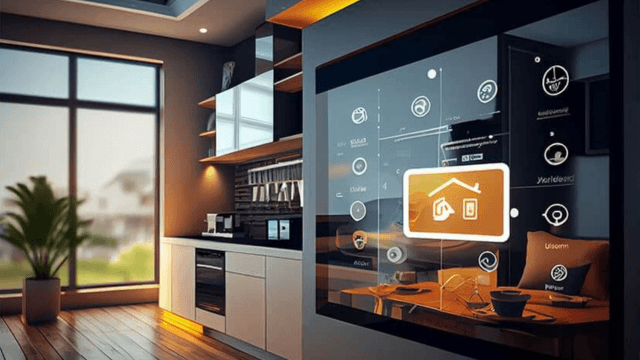Smart Home Automation: Integrating Devices for Enhanced Living
Asenqua Tech is reader-supported. When you buy through links on our site, we may earn an affiliate commission.
Welcome to the future, folks! We’re living in a time where we can control virtually every aspect of our homes with the simple tap of a screen or the sound of our voice. It’s not sci-fi anymore, it’s reality.
Smart devices have transformed our homes into intelligent hubs, making our lives easier and more convenient. They integrate seamlessly into our daily routines, from turning on the lights to preheating the oven.
We’ll explore the details of integrating smart devices for automated home services. Let’s dive in, shall we?
Advantages of Smart Home Integration
Smart homes offer many benefits – let’s delve into the specifics.
Enhanced Efficiency and Comfort
Efficiency and comfort are synonymous when it comes to home automation. Smart home integration allows devices to coordinate operations, resulting in a smooth home experience. One device’s action might trigger another’s. For instance, a smart thermostat can reduce heating levels when smart windows detect sunlight. Efficient synchronization between devices assures optimal device performance and contributes towards an enhanced user experience.
Energy Savings
Let’s pivot and look at Energy Savings. Homes with smart devices often use less energy, a win-win for inhabitants and the environment. When a home’s systems run seamlessly, no watt of energy goes wasted. As stated by the U.S. Department of Energy, integrating smart technologies can reduce home energy use by nearly 10%.
This data underscores smart home integration is pivotal in fostering energy efficiency and environmental sustainability.
Convenience and Peace of Mind
One of the significant benefits of smart home integration is convenience, offering peace of mind to all end-users. Automated routines simplify daily tasks. Rather than manually controlling each device, homeowners can set routines—lights turn off when you leave, the coffee machine starts as your alarm rings—it’s as if your house is on autopilot mode. However, interoperability proves essential to reaping these benefits, which we’ve discussed earlier in the article.
Safety and Security
Lastly, we must recognize the impact on safety and security. Smart home integration amplifies security measures. Homes furnished with smart locks, cameras, and alarms can react in interconnected ways to potential threats. For example, a security camera detecting unusual activity can trigger smart lights to flicker and deter possible intruders. Increased safety helps protect your assets and offers priceless peace of mind.
So, we’ve seen numerous advantages of smart home integration—undoubtedly, it influences our lives in substantial and meaningful ways. Still, for households considering this significant leap towards a digital lifestyle, various factors must be taken into account: cost, compatibility of devices, and future-proofing, to name a few. As smart technology continues to evolve, we anticipate further enhancements that will make these virtual ecosystems even more enticing.
Choosing the Right Smart Home Ecosystem
Picking an ideal smart home ecosystem requires careful deliberation. By considering certain key factors, you’re more likely to make a choice that aligns with household preferences, needs, and long-term expectations. Additionally, familiarity with popular smart home ecosystems helps in narrowing down options.
Factors to Consider
Firstly, cost is critical. Smart devices can be quite pricey, so your pocket depth matters. You may need more than a lone device to take advantage of smart technology’s advantages. Regard your budget closely.
Device compatibility plays a pivotal role as well. Numerous smart devices come equipped with specific software. Verify that your chosen devices support the preferred home ecosystem to ensure seamless integration. Communication between devices, known as interoperability, delivers the best smart home experience and optimizes overall system performance.
Security is paramount. While smart devices offer enhanced home security, they’re also susceptible to hacking. Your choice must prioritize robust security measures to safeguard your home and data.
Other considerations include:
- Ecosystem’s openness to third-party devices
- Level of customization
- System’s user-friendliness
- Available customer support
Our decisions should reflect what we value most in our connected homes.
Conclusion
In conclusion, smart home automation represents a significant leap towards a more efficient, secure, and convenient lifestyle. By integrating various devices, homeowners can enjoy a harmonious living environment that saves energy, enhances safety, and simplifies daily routines. However, choosing the right ecosystem requires careful consideration of cost, compatibility, security, and future-proofing. As technology evolves, the potential for even more seamless integration and improved user experiences grows, making the journey towards smart living an exciting and rewarding endeavor.







